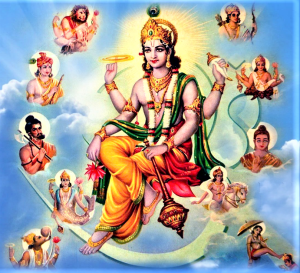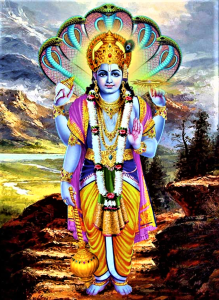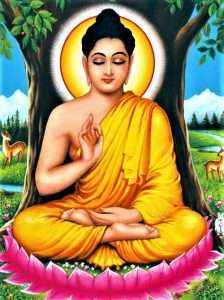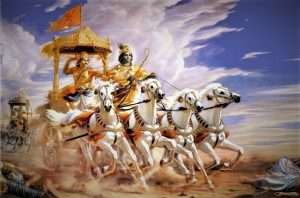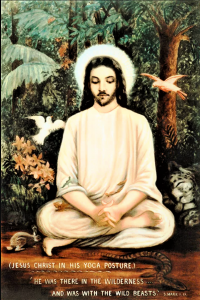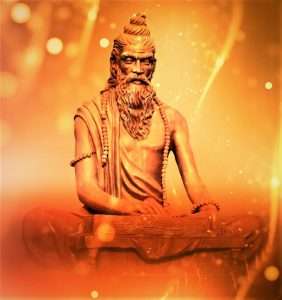The Branches of Yoga
Yoga has several branches. Some of them are the major ones and very ancient. Regarding those branches of Yoga, God Krishna reveals the secrets in the Grand Text Srimada Bhagavatam where He talks to Uddhava. In canto – 11, chapter – 20, verse – 6,7,8 God Krishna says –

Verse in Sanskrit –
श्रीभगवान् उवाच।
योगस्त्रयो मया प्रोक्ता नृणां श्रेयो विधित्सया।
ज्ञानं कर्म च भक्तिश्च नोपायोऽन्योस्ति कुत्रचित्॥६॥
Transliteration –
Sri Bhagavan uvacha
Yogas trayo maya prokta nrinam sreyo vidhitsaya|
Gyanam karma ca bhaktis cha nopayonyosti kutrachit||6||
Meaning – God Krishna says, I have spoken of three paths of Yoga – Jnana Yoga (the path of knowledge), Karma Yoga (the path of action) and Bhakti Yoga (the path of devotion). Besides these there is no other means anywhere.
Verse in Sanskrit –
निर्विण्णानां ज्ञानयोगो न्यासिनामिह कर्मसु।
तेष्वनिर्विण्ण चित्तानां कर्मयोगस्तु कामिनाम्॥७॥
Transliteration –
Nirvinnanam gyana yogo nyasinamiha karmasu|
Tesvanirvinna chittanam karma yogastu kaminam||7||
Meaning – Gyana Yoga is recommended for people who are detached from material life. People who are not detached from material life should follow the path of Karma Yoga.
Verse in Sanskrit –
यदृच्छया मत्कथादौ जातश्रद्धस्तु यः पुमान्।
न निर्विण्णो नातिसक्तो भक्तियोगोऽस्य सिद्धिदः॥८॥
Transliteration –
Yadricchaya matkathadau jata shraddhastu yah puman|
Na nirviṇṇo nati sakto bhakti yogosya siddhidah||8||
Meaning – If somehow, such a person who is neither very detached nor attached to material life, by virtue of good fortune develops faith in listening and chanting My glories, should follow the path of Bhakti Yoga. (11.20.8)
These preceding verses of Srimad Bhagavatam, show light on the chief branches of Yoga following which liberation can be attained.
Some more information about the above-mentioned branches and other important branches of Yoga – We hint at in brief, some more information about the three main branches and other different important sub-branches of Yoga including the relevant texts and the great personalities hereunder –
- Jnana Yoga – It is a path of self-inquiry; the Yoga of knowledge – not knowledge in the intellectual sense – but the knowledge of Brahman and Atman and the realisation of their unity where the individual uses the powers of the mind to discriminate between the real and the unreal, the permanent and the transitory. Upanishads, words of Adi guru Shankaracharya, Swami Vivekananda, Maharsi Raman and Yogi Aurvindo, Baba Shantananda etc. are the main texts for this discipline of Yoga. For more information, please refer to Jnana Yoga.
- Karma Yoga – To check and balance the Rajasic properties, this branch of Yoga is much needed. The Gita is a very important text for this aspect of Yoga. Along with this, several texts in particular are replete with the ideas of Karma Yoga of which one more is Srimadbhagavata Purana. For more information, please refer to Karma Yoga.
- Bhakti Yoga – To channelize and balance the emotions of an individual Bhakti Yoga is the way. It is an approach to establish association with everything and each being around in order to feel oneness. This is path of love and devotion to God. Narada Bhakti Sutra, Gita, Ramayana, Bible are relevant texts in this regard. For more information, about this, please refer to Bhakti Yoga.
- Hatha Yoga – This discipline of Yoga as generally believed deals with physical aspects of a human being. But in its broader sense the purpose of Hatha Yoga is to bring balance between two major forces; Ida and Pingala, into a human body. These Asana, Pranayama, Mudra, Bandha, Shatkarma are the components of Hatha Yoga . Some of the relevant texts of Hatha Yoga are: Hatha Yoga Pradeepika, Gherand Samhita, Hatha Ratnavali, and Shiva Samhita For more information, please refer Hatha Yoga.
- Raja Yoga – This discipline of Yoga details the mind and its modifications. It is also called the Astanga Yoga because of its eight limbs. The relevant texts to this are Patanjali Yoga Sutra, Gita, Kurma Purana and certain portions of Gherand Samhita For more information, please refer Raja Yoga.
- Kundalini Yoga – This discipline of Yoga is directly related to the the energy centers and Kundalini in the human body. The main texts to this are Shata Chakra Nirupan, Padapanchakam, Goraksha Shatakam, words of Swami Sivananda, Swami Satyananda and saints like these. For more information, please refer to Kundalini Yoga.
- Nada Yoga – This branch of Yoga connects to the inner sounds within the body for spiritual awakening. The words of Guru Gurakshanath is relevant to this fact. There is a hint regarding this in the classical Yoga text by Sage Patanjali in (aphorism 1.28, I.31). For more information, please refer to Nada Yoga
- Swara Yoga – This branch of Yoga deals with the manipulation of breath flow according to the cycle of the moon during a Bright Fortnight and Dark Fortnight. Regarding this Shiv Swarodaya, literature of Swami Sivananda, Swami Satyananda are relevant. For more information, please refer to Swara_Yoga.
- Kriya Yoga – The word Kriya means ‘activity’ or ‘movement’ which refers to the activity or movement of consciousness. Kriya Yoga purposely creates activity and awakening in consciousness so all faculties are harmonised shine into their fullest potential. This system of Yoga includes special practices of Mudras, Bandhas, certain specific Kriyas, Pranayamas along with strong mental awareness. There is no specific classical text available to Kriya Yoga however in the past 100 years two important systems of Kriya Yoga have evolved; the first of Paramhamsa Yogananda and the second as taught by Sri Swami Satyananda Saraswati. For more information please refer to Kriya_Yoga

Misconception about Yoga – The misconception that dominates regarding Yoga is its portrayal and practice as mere exercise. What is done and taught nowadays in the name of Yoga as different movements of the parts of the body, breathing etc. are not Yoga. In fact they are nothing of Yoga. At best they might resemble a few disciplines of Yoga falling under the purview of Hatha Yoga. That too, unlike what is taught these days, are systematic and profound which needs no illogical, imaginative alterations and modifications. Hatha Yoga (the most commonly practiced these days), Raja Yoga, Kundalini Yoga, Nada Yoga, Swara Yoga, Kriya Yoga, etc. are several sub-branches of Yoga which deal with different aspect of human phenomenon and there are many available authoritative texts that explain them in detail. They are supposed to be applied to an individual as per his/her needs and limitations. Each individual need to find the most suited to his/her personality, need and requirements.
Consoling Conclusion – We do accept whatever has received dominance in this filed: be it certain trends or styles but we do know that in the end what will survive is the essential need. There has never been any substitute to this. We do pray universe guides us in this path of righteousness, virtue and truthfulness.
With Love and Gratefulness (Founder Rohit Kumar)
Source – Ancient texts of Yoga, words of Swami Sivananda, Swami Satyananda, Swami Niranjanananda Sawaswati and personal study.
Hari Om Tat Sat!





